Williams College – Sawyer Library
Bohlin Cywinski Jackson completed the renovation and addition for Williams College’s Sawyer Library located in Williamstown, Massachusetts.
Following a 2003 study, Williams College and the design team embarked on a multi-phase building strategy aimed to maximize student and faculty interaction by creating the new Sawyer Library within a new humanities and social sciences academic quadrangle. Ever mindful of the scale and setting of the historic campus, the plan presented an intriguing dual opportunity: (1) The restoration of iconic 1922 Stetson Hall and (2) The creation of an altogether new collaboration-based library to replace its collection-heavy predecessor.
Designed to the highest standards of its day, Stetson Hall was twice expanded by inflexible additions. It was abandoned as the main library in 1976 and assumed a peripheral role in college life. The Sawyer Library project restores Stetson’s status at the heart of the Williams experience as well as its architectural splendor. Stetson’s classrooms, offices, reading rooms, and archival galleries are again alive with purpose. Its former nine-story book stack is refashioned as the gateway to a bright, open, and interactive library vision focused on collaboration, which departs significantly from the mid-twentieth century library paradigm based on large swaths of universally-configurable space. In contrast, Sawyer’s program clearly distinguishes a Collaboration Zone and a Collections Zone.
The Collaboration Zone is arrayed on three levels housing Reference, Information Technology, and Rare Books. It compactly assembles all the library’s service resources and welcomes users with natural light, social presence, and expansive views. Users remark on how extraordinarily diverse study and collaboration areas are and how they enjoy discovering varied individual and group experiences.
The four-level Collection Zone assures that these experiences are achieved without relegating books to the background. Monographs are centrally located, convenient to researchers. An innovative hybrid-compacted format retains the browse-ability of traditionally-open stacks while optimizing space utilization. Individual study carrels surround the collection’s perimeter, offering mountain views, natural light, easy collection access, and scholarly solitude.
The dual Collaboration and Collections Zones present library patrons with a strong, legible spatial diagram; each Zone’s infrastructure is suited to its purpose. Flexible mechanical systems and demountable partitions ensure that the Collaboration Zone will remain flexible and vibrant; while the Collection Zone’s structural capacity and stack format can absorb changes in the collection and its management. These physical differences conserve and focus resources, both construction and operational, while future-proofing the library.
The design is a celebration of contrasts: old and new, collaboration and collection, individual and group, public and private. This diversity is organized by a series of top-lit atria arrayed in a Beaux Arts spatial sequence. The succession begins at Stetson Hall’s historic foyer and passes through the former book stacks, now the ͞Stack Atrium.͟ It culminates in the Light Reflector Atrium cascading downwards to an informal events space. This procession of monumental-yet-intimate spaces forms the heart of the library and the College.
Architect: Bohlin Cywinski Jackson
Design Team: Bill Loose, Frank Grauman, Lee Clark, Chris Sutterer, Jason Kilgore, Gabe Hodge, Adam Wise, Renee Sutterer, Collyn Hichney, Theresa Thomas
Structural Engineer: Christakis VanOcker Morrison
Civil Engineer: Guntlow & Associates, Inc.
MEP Engineering: Altieri Sebor Wieber, LLC
Construction Management: Consigli Construction Management
Photography: Nic Lehoux, Peter Aaron, Francis Dzikowski

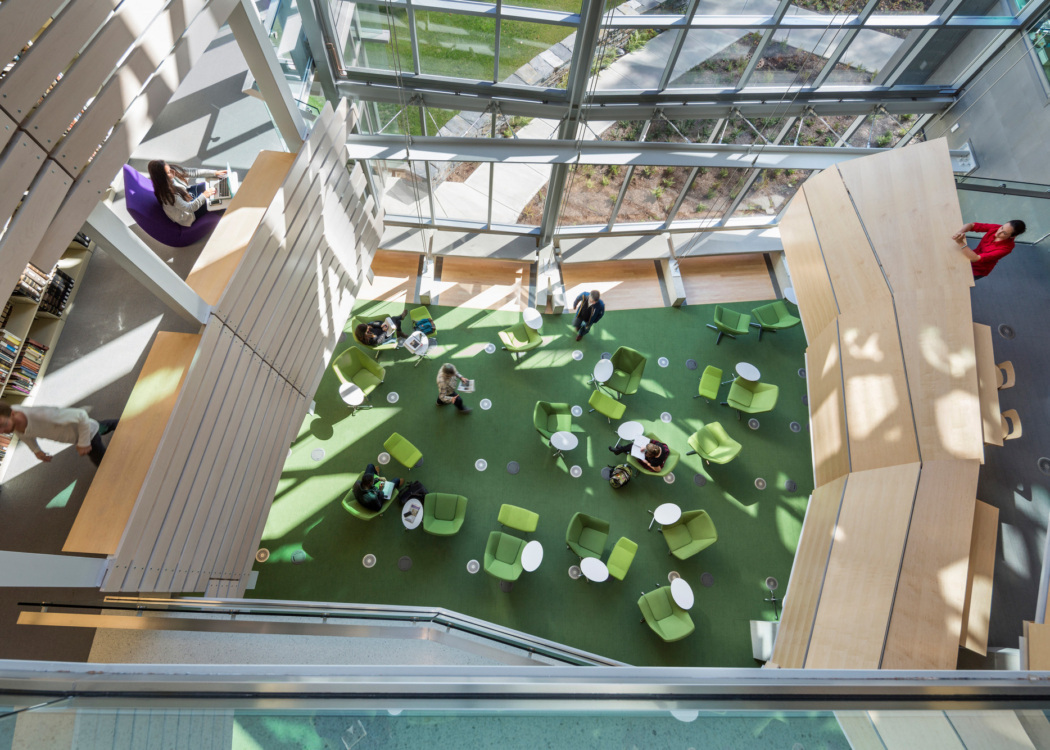
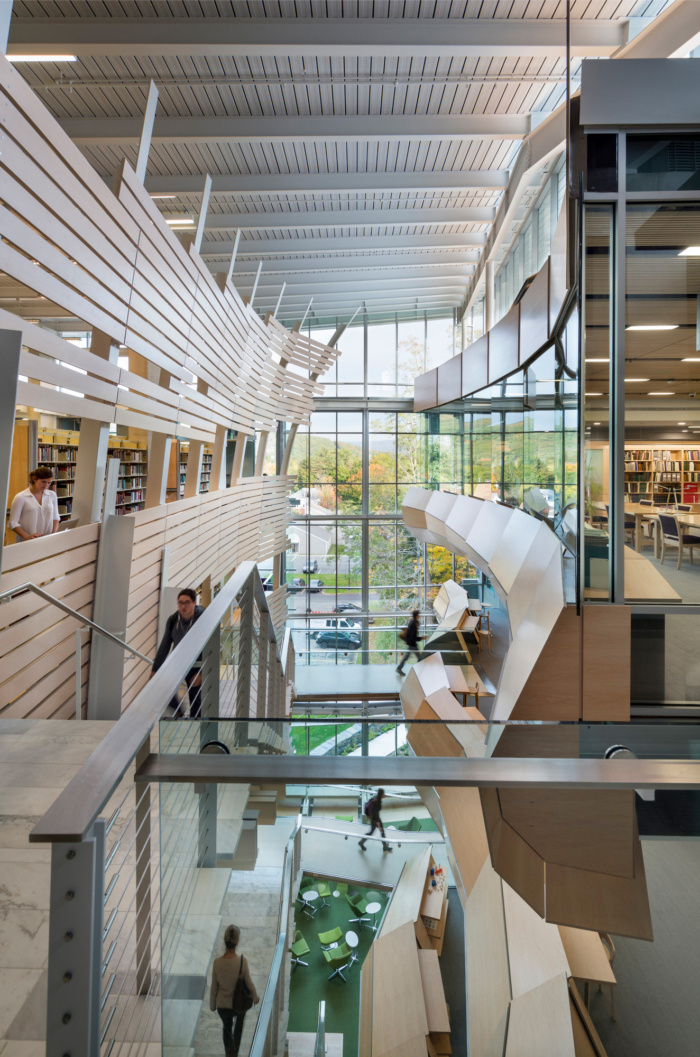
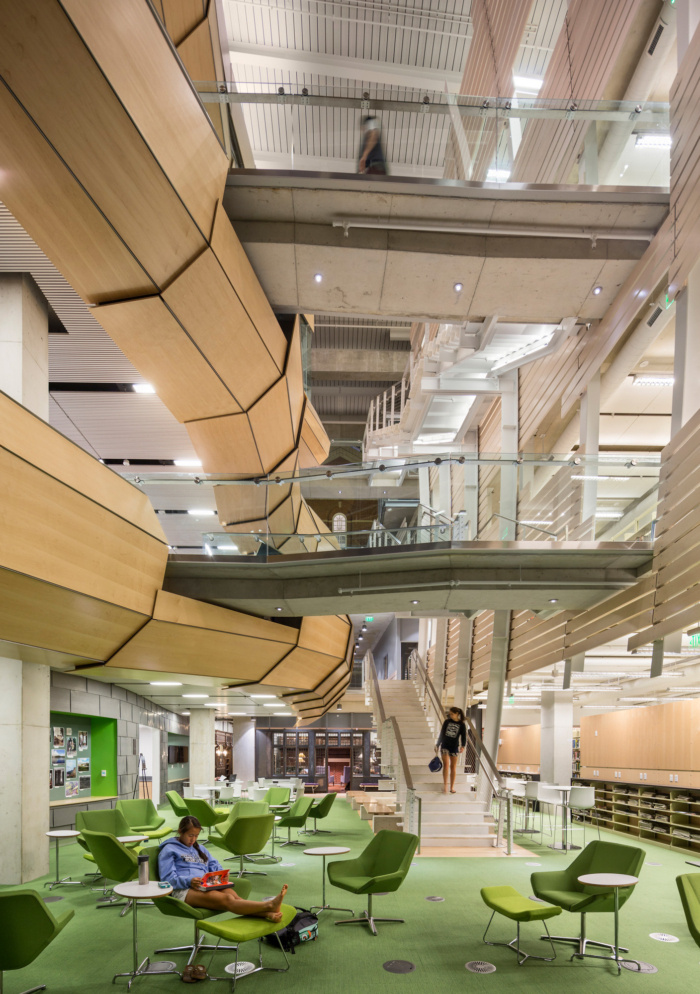
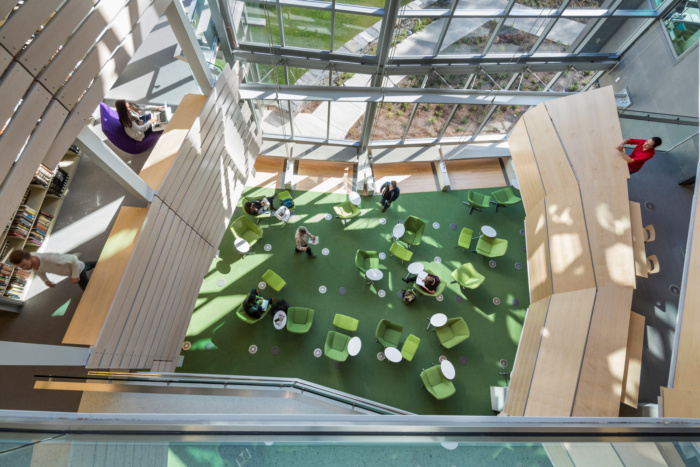

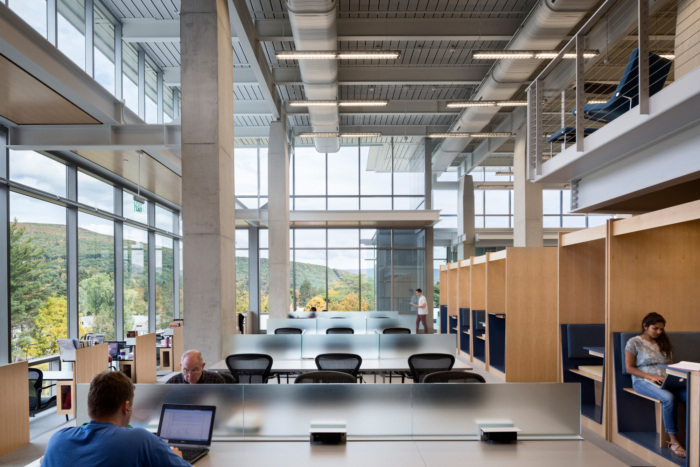

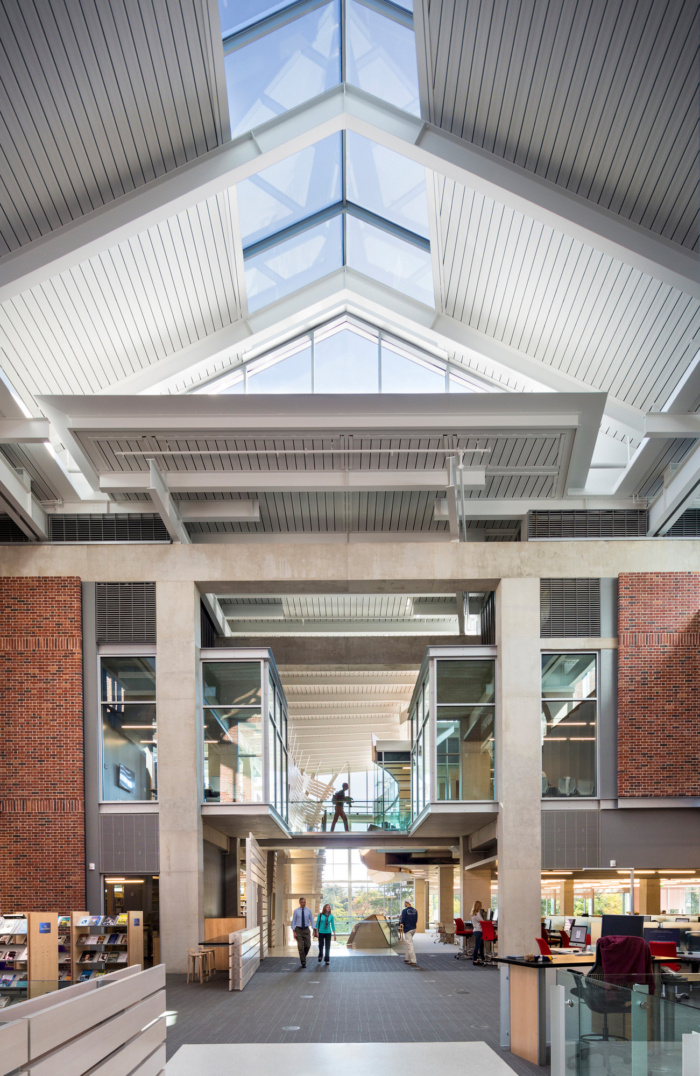



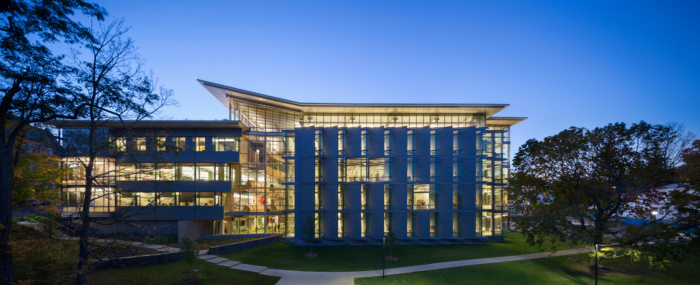











Now editing content for LinkedIn.